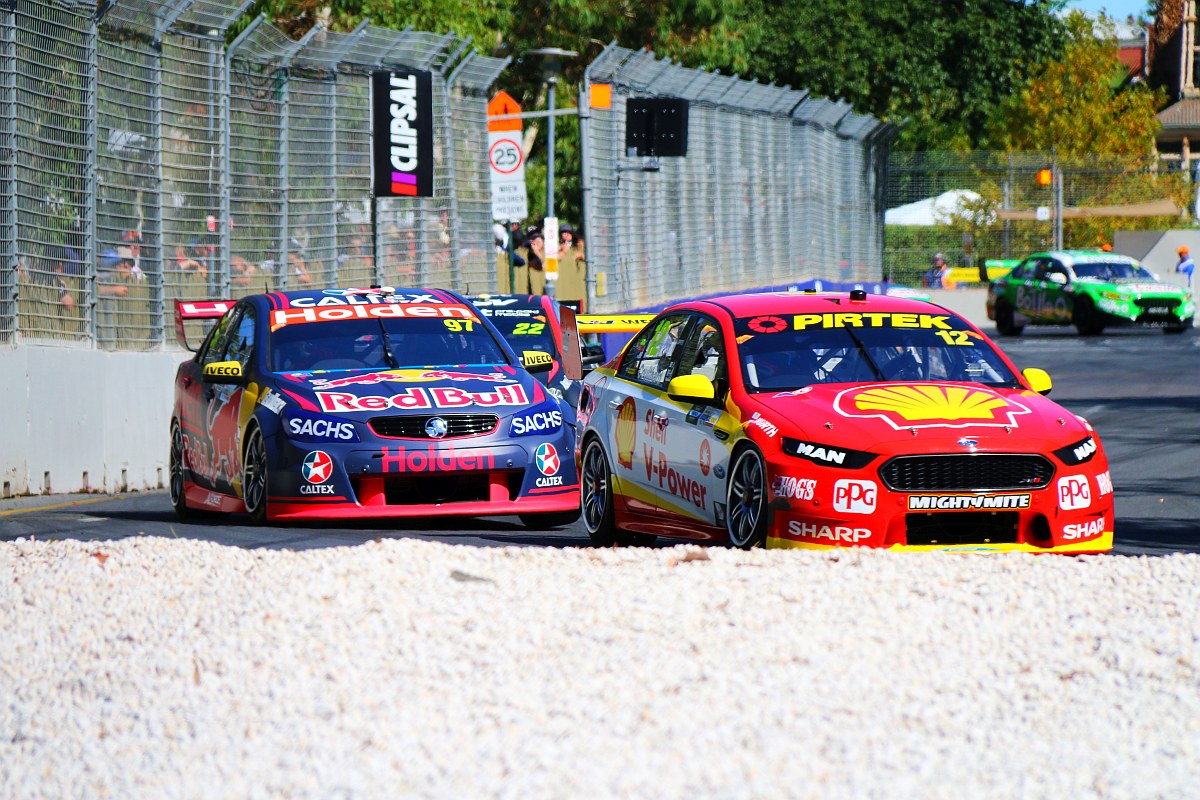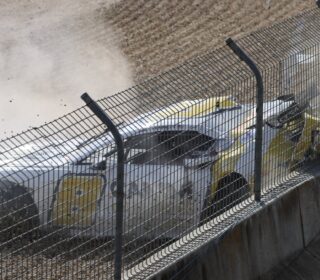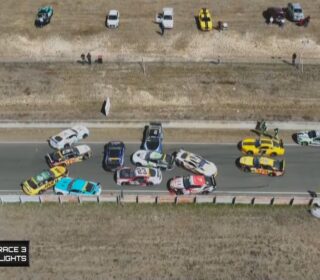THE BIG PICTURE.. ON THE BIG PICTURE

There’s an elephant in the room and it is increasingly difficult to ignore.
What does the long-term future of Supercars look like?
By posing that question, I am not ringing alarm bells regarding its health and well-being, nor sounding its death knell, or suggesting the whole thing is going to implode.
It isn’t.
Despite the predictions of the many on-line doomsayers, usually laughably ill-informed, Supercars is alive and well, and will continue to exist as our premier motorsport category well into the foreseeable future.
The core of the Supercar series, the teams, are in the main fit and healthy and have infrastructure that will ensure their survival at the premier level of the sport.
Sure, some are more stable financially than others, some are more commercially savvy than others, some are better run than others, but fundamentally the teams operate at a high level that ensures they can support a large and competitive program.
So too the same is true of the series.
It has a strong and established calendar, a major television deal that ensures big coverage (at least in terms of total hours) and its associated and all-important financial returns for the teams.
What I am really asking is, what is the future direction of Supercars?
As we all know, the Falcon is no longer manufactured. Nissan has just deleted its Altima from its Australian model line-up. And Holden is about to stop making the Commodore here.
Then there’s the issue of V8 engines … Nissan already didn’t actually offer a V8 in its Altima anyway, Ford doesn’t have a V8 anymore and neither will Holden when the new, imported Commodore is launched late this year.
In fact, we have known for some time that Holden will instead race a turbocharged V6-engined Commodore from 2017 onwards. It’s being jointly developed right now by General Motors and Triple Eight.
But contrary to death notices from greenies the world over, the V8 engine isn’t actually dead or dying … Mercedes Benz, BMW, Audi and plenty of others have modern high-tech V8 engines that are very much a part of their performance car line-ups.
So the V8 engine is not dead in that sense, even if with the demise of local manufacturing the role it plays in the marketplace, and therefore Supercars’ future, is different.
If we accept that the series is strong and so are the teams, what will they be racing in two or three years’ time? And are V8 engines critical to the long-term future of Supercars? Does it have to be market-relevant?
Those questions lead to an even bigger one … is Supercars an entertainment or a sport?
Touring Car racing – known in the very beginning at Series Production – began in Australia as a means of showcasing production models on the track and slowly that has evolved over five decades or so into what we have today.
In reality, today’s Supercars have nothing to do with production cars beyond pseudo-production bodyshell shapes, they are are full-on racecars.
So the direct-relevance of Supercars to the automotive landscape was actually lost some time ago, though until the recent death of the Falcon, the Altima here and local production of the Commodore, we could at least claim that Supercars looked like something you could buy in the showrooms.
To be fair, next year’s Commodore racecar will look like the road-going version you’ll be able to buy then.
There’s talk of enabling the Ford Mustang to compete and, certainly, that seems like a good idea … the Mustang is iconic the world over and would make a great looking racecar, and again at least it’d be a model that’s being sold in the showrooms at the time it is racing.
But does it really matter whether the Supercars are current or not?
If you accept the convention that it’s a ‘tribal’ sport and spectators are there to support their favourite brand or driver, is it going to matter much what is being raced?
From a marketing perspective it would certainly play better with sponsors and look better on the screen if the cars are contemporary but it’s the actual racing that matters, isn’t it?
What the fans really want to see if wheel-to-wheel racing, a bit of biffo, lots of passing and unpredictable race outcomes … and preferably that their favourite driver wins!
So I would argue that it’s the Entertainment factor that is the most important to the future health of Supercars.
Adding to that theatre, noisy, fire-breathing V8 engines are also important.
Even if a V8 isn’t available in a particular model – come on down Altima – so what? Sticking a V8 in a particular model to race in Supercars is fine, surely, if it means more variety in the field, more entertainment.
And although the accelerative nature of turbo engines makes them exciting to watch, there’s nothing like the sound of a V8.
So on that basis, we’re now looking at a future Supercars category that allows both V8s and other engine configurations, in two and four door body styles … a mix that I believe will satisfy the ‘traditional’ Supercar fans and enable the category to refresh its look regularly.
That’s all fine in theory, of course, but it’d be a nightmare to police from a performance parity point of view. I don’t want that job.
There will be those that argue, too, that such a ménage will hold little appeal to the automotive manufacturers and won’t be representative of what Australians are driving on the road … but does that matter?
Firstly, I would argue it’s pretty clear that the future of Supercars is as an entertainment first and foremost.
And secondly, with the end of local manufacturing here, there just isn’t going to be interest in going racing here … most brands on the Australian market simply don’t shift enough product to justify the investment.
So what if, as some suggest, we abandon Supercars as we know them now and instead adopt another category altogether – GTs being the most popularly spoken about nomination.
Certainly the Supercar teams have the expertise to run those cars and they are a plug-and-play alternative, but there are a couple of issues that mitigate against that in my view.
Firstly, they are even more expensive to buy than a Supercar is to build. And secondly parts are as dear as poison, according to those teams who currently run them.
So they’re more expensive to buy and run and, if we are honest with ourselves, the racing in GT just isn’t as good, as close or as competitive as it is with the current spec of Supercars.
No question, the GT cars look fantastic, sound great and are awesome to watch out on the track, plus they boast a variety of makes and models we could only dream about in the Supercars field.
But as an alternative to or replacement for the current Supercars? I am not seeing it.
Same goes with the BTCC-spec cars.
This segment of cars is now more representative of what Australians actually drive on the road (than the current Supercars) and while I guess racing enthusiasts might connect with them because of brand loyalty, the vast majority of buyers of these cars are actually not interested in cars.
It’s a sector of the market where a car is a means to an end, there’s little engagement, so I don’t hold out any hope that racing them ala the BTCC is suddenly going to create an influx of new fans.
Compared to a Supercar as we know it, the BTCC-spec cars just aren’t as noisy or spectacular, even if (judging by the highlights packages we see here) the racing is pretty damn good a lot of the time.
So, short of any better ideas, it seems to be the future of Supercars is evolution not revolution.
I think it’s a mix of the spectacular V8s we know and love, and turbocharged engines of all varieties, in contemporary models of two and four doors, equated with aerodynamics and performance balances that protect the great racing.
In short, it’s entertainment.
WORDS: David Segal
IMAGE: Mark Walker







